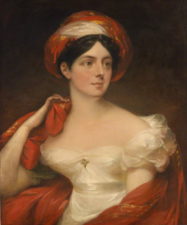In September 1831 the Anti-Slavery Society in London published The History of Mary Prince, a West Indian Slave. Related by herself. Prince, who was illiterate, had dictated her story, at her own suggestion, to a young abolitionist named Susanna Strickland (who later, after emigrating with her husband, became an early Canadian author under her married name of Susanna Moodie). Historians have questioned how far the Anti-Slavery Society may have influenced Prince’s story as it was published, since it conforms so neatly to what emerged as the typical slave narrative designed to move its readers to support the emancipation movement. Orlando says: “Since the original transcript does not survive, and nothing is known of the relationship between the elderly black woman and her young white scribe, it is impossible to say whether MP was herself more explicit about the worst of her experiences (particularly sexual abuse) than the printed text spells out, or whether the text’s reticence is her own.” She was, however, clearly a remarkable character who might well have had considerable skill with language. (Her name arose from the nickname “Princess of Wales”, reflecting other people’s opinion that she thought pretty well of herself.)
Her style is stark and emphatic: there “was no end to my toils no end to my blows . . . . It was . . . my heavy lot to weep, weep, weep, and that for years.” The calls the mistress who bought her in her first sale, “savage” (a word which challenges race stereotypes). After a particular beating she says she felt that “life was very weak in me, and I wished more than ever to die.” She fluently relates her own story to the principles at stake, which seems to align her naturally rather than tactically with anti-slavery campaigners: “The man that says slaves be quite happy in slavery that they don’t want to be free – that man is either ignorant or a lying person.” She had only heard this opinion in England, never from anybody in the Caribbean.
“On the one hand the re-issues indicate that MP’s book was popular; on the other hand a rash of virulent attacks, both published and through the law-courts, shows that it had hit powerful economic interests in a way that hurt. MP’s last “owner”, Mr Wood, defended himself by levelling charges of a sexual nature against her. Thomas Pringle secretary of the Anti-Slavery Society, who had published MP’s work, thought these were “in all probability, a vile calumny,” but he also judged them “too indecent to appear in a publication likely to be perused by females.” Two years later James Macqueen, editor and plantation-owner, mounted a vicious attack on MP’s book in Blackwood’s Magazine, alleging that it consisted of hideous falsehoods and misrepresentations.![]()
The aftermath dragged on. Pringle sued the London publisher of Blackwood’s, and MP’s last “owner” sued Pringle for libel.
This information is provided by Dr Isobel Grundy, University of Alberta, and comes from Orlando: Women’s Writing in the British Isles from the Beginnings to the Present, Cambridge University Press, by subscription: see http://orlando.cambridge.org.

